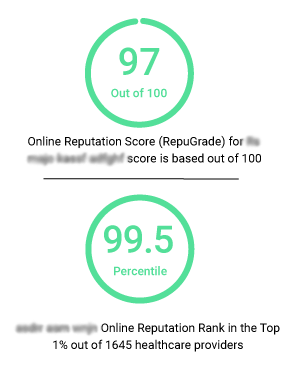SWOT Analysis in Healthcare: A Self-Assessment to Keep Your Practice Growing

A SWOT analysis is a simple tool that you can use for self-assessing your healthcare practice’s internal strengths and weaknesses, along with external opportunities and threats. When done at least twice a year, SWOT analysis can help your team discover any key issues to update your healthcare marketing strategies and tactics for better overall ROI.
Strategic planning of your practice’s marketing not only helps you implement changes in the future but can also give you an overall picture of your current condition. This means you can easily document where you are now, where you would like to be, and what it will take to get there, starting today.
What is SWOT in Healthcare?
Many companies use a SWOT analysis to further define their brands, customer personas, common questions and problems, competition, and more. This gives them a full picture of who they are as a company or brand, who their customers are, and what obstacles they may be facing with competitors. Then, they can create structured and specific goals and milestones to help their marketing efforts increase ROI.
Just as in other businesses, healthcare practices experience competition. Practices with strong marketing strategies such as online presences, great online reputations, and intuitive automated patient tools tend to end up on top of their competitors.
SWOT analysis gives your healthcare team a chance to sit down and list out your current marketing efforts and what might need to be done in order to stay competitive in your vertical space.
Why Does Your Healthcare Practice Need a SWOT Analysis?
Essentially, a SWOT analysis will help your healthcare practice reveal hidden opportunities while addressing any potential threats regarding your marketing efforts. Once you identify your practice’s strengths, weaknesses, opportunities, and threats, you can reflect upon, develop, and improve marketing strategies to stay ahead of the competition and to increase patient acquisition and retention.
Elements of a SWOT Analysis
A SWOT analysis is traditionally conducted using a simple square split into four quadrants, with “strengths” and “weaknesses” across the top and “opportunities” and “threats” at the bottom. Then, the words “internal” and “external” are placed on the left of the box, top and bottom, respectively.
This grid is a simple way to list out and assess each component.
#1: Strengths
When assessing your healthcare practice’s strengths and weaknesses, consider everything from an internal perspective and what you have control over.
To start with strengths, list your capabilities and resources that you feel give you an edge over other practices. You may also consider anything positive that you hear consistently in patient feedback. This can include:
- Unique or advanced equipment or services
- Automated patient resources (virtual appointments, online check-in, online paperwork, etc.)
- Established online reputation
- Low wait times
- Friendly staff
- Convenient location & easy parking
This list of strengths will help you to notice what you have implemented already that is setting you apart from the competition.
#2: Weaknesses
Writing out your practice’s weaknesses helps you to place all of your thoughts for improvement in one clean list. This list can include things like:
- Long wait times
- Understaffed
- Old or faulty equipment
- Outdated technology/technology systems
- Difficult appointment booking process
- No marketing efforts or a low marketing budget
It’s important to try not to get too negative with weaknesses. Place focus on what is affecting patients and your practice the most and that you could control or change yourself.
#3: Opportunities
Opportunities and threats are both meant to be viewed from an external lens and are things you do not have control over but can either leverage (opportunities) or maneuver away from (threats).
Starting with opportunities, you may find yourself listing things like:
- New real estate in a better location
- Competitor relocated away from your practice
- New technology advancements
- Changes in patient needs/demands
- Acquiring great new physicians and/or staff
- Increase patient referrals
#4: Threats
List anything that you cannot directly control that may be threatening your healthcare practice. This can include things like:
- New practice in the area
- Loss of staff
- Changes or loss in patient demand
- Changes in the economy
Listing out threats to your practice can help guide your future marketing decisions to maneuver away from or avoid them completely.
Goal Evaluation After a SWOT Analysis
Once you have a completed SWOT analysis list, brainstorm your next steps. Focus on creating clear and concise goals that are reasonably attainable and include milestones to track your progress. Try converting your weaknesses and threats into strengths and opportunities with changes in your marketing efforts.
Implementation
Once you have fully documented and evaluated your new goals based on your SWOT analysis, you should have a list of actionable items for you and your staff to start with.
Prioritize these new goals and tasks based on what makes logical sense to your practice. Delegate tasks and assign project owners, making sure to check in on milestones often. Document all goals and plans of action for the team to see.
While it may seem like a simple task to list out your practice’s strengths, weaknesses, opportunities, and threats, the best way to get the most out of your SWOT analyses is to dive deep and take your time. Set aside a few hours for a SWOT analysis meeting, to allow enough time for staff discussion as well as the final goal setting.
Thumbnail image designed by freepik.com
Comments are closed


